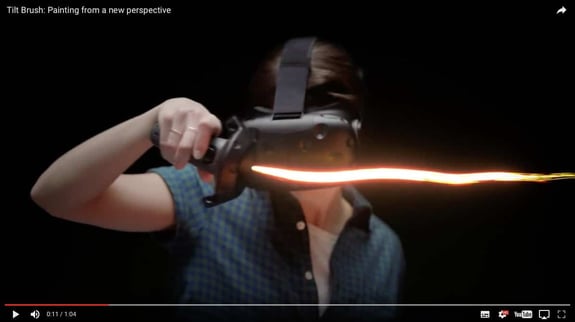So in part one, I had you think back. If you haven't read part one, please head back (pun intended, sorry!) and take a look: Tech for Business Today, Part 1
In part two, I am hoping for the opposite effect. I’d like you to think forward and ponder the possible uses of one much-hyped new technology: virtual reality. As you’re reading, think about how in the future, you could use some of these gadgets in your business and what they may do for you.
Virtual Reality: Start with the Gear
In this context, when I’m talking about virtual reality, I’m referring to hardware and software that works together to simulate reality, basically by tricking your eyes with computer-generated input. Here’s the kind of hardware we’re talking about.
1) Oculus Rift
With the first prototype appearing in 2010, the Oculus Rift soon exploded on the VR scene as a leader in its field. While the Oculus Rift is known primarily for its gaming applications, a company representative says they are anticipating seeing their product used in more business scenarios. “Imagine being in a product review with people from around the globe – your operations lead is at the manufacturing plant, your marketing head is visiting an ad agency, your product lead is at the R&D Lab, and your CEO is at HQ,” says Laird Malamed, the COO at Oculus, “In VR you will be able to all be together and have the product in that virtual space.” But at a price point ranging between US$600-$800, depending on accessories, the Oculus Rift is a fairly expensive entry point into virtual reality.
https://www.oculus.com/en-us/rift/
2) Google Cardboard
With an extremely friendly price of around 25 dollars, Google Cardboard takes your smartphone and gives you the VR experience through literal cardboard. Looking at these reminds me of the single-serving cereal boxes you would eat as a kid where you would open the flaps to put milk in.
Better yet, you can even download the design and make your own for free. They can also be easily branded as a marketing tool, such as when popular acapella group The Pentatonix gave away branded Google Cardboard so that fans could watch their new Lego-branded video as a 360-degree virtual reality experience.
In addition to YouTube 360 videos, Google offers about 500 apps through their Google Play store that use Cardboard.
"Google Cardboard enables everyone with a smartphone to experience VR easily and at a low cost. Companies use Cardboard to promote their products and brands, but it's also great for immersive educational content – especially shared group training. We've also seen examples where companies give a tour of their facilities to potential clients using Google Cardboard,” says Mike Jazayeri, the director of Product Management for Google's VR efforts.
https://vr.google.com/cardboard
3) Tilt Brush
Just watch the video. Seriously this is so cool.
VC3 has one on order that we can’t wait to add to our Innovation Lounge for staff and clients to try out… we will post a full review once we’ve had a chance to put it through its paces!
[embed]https://www.youtube.com/watch?v=TckqNdrdbgk[/embed]
4) Samsung Gear VR
Developed in partnership with Oculus, for US$199, you can pick up a headset that will work with Samsung phones such as the Galaxy S7. These lightweight goggles set up in minutes, making them extremely user-friendly. Being portable and wireless makes them attractive to businesses wanting to use VR in more flexible field environments.
http://www.samsung.com/global/galaxy/gear-vr/
Examples of VR in Business
Well, this is all fun and games, but what industries are actually using VR? The car industry is definitely pushing the marketing limits with VR, especially with the new Volvo X90.
Construction is another place where it is making a huge difference by eliminating the traditionally built mock-up. Now you can walk down a VR hallway and actually see what a building will be like before it is built.
The most obvious industry to adopt VR is real estate. Take virtual tours of potential homes, open closets, ask questions in live time, and even play with what the home would look like renovated to your tastes. Want a different color on the walls? No problem. Open up that living room? Can do! The VR experience brings this industry up to a whole new marketing level just by putting on a pair of goggles.
Where to next?
In conclusion, 2017 is going to bring a lot more VR technology our way in terms of business and its uses in industry. Embracing technology is one thing, but using it actually requires a change in thinking. How will you use the technology of today to benefit tomorrow?


